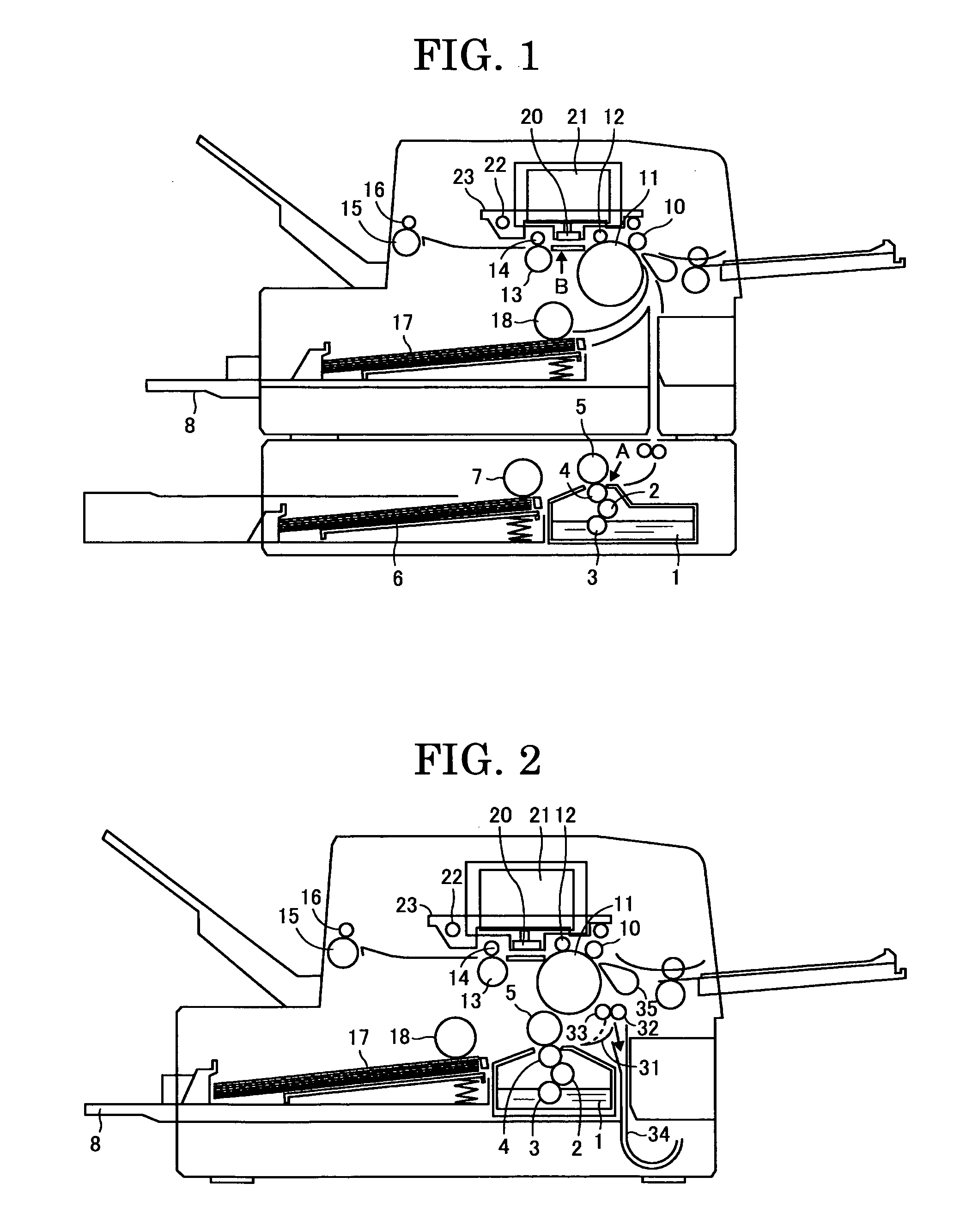Image forming method, and image formed matter
a technology of image forming and material, applied in the field of image forming method, can solve the problems of large degradation of image quality, inability to inkjet record paper of this type, and absorption delay, and achieve the effect of high speed and excellent abrasion resistan
- Summary
- Abstract
- Description
- Claims
- Application Information
AI Technical Summary
Benefits of technology
Problems solved by technology
Method used
Image
Examples
first embodiment
(1) in a first embodiment, the colorant contains a polymer emulsion in which a water-insoluble or sparsely soluble coloring material is coated with an anionic polymer fine particle (i.e., a pigment coated with an anionic resin).
second embodiment
(2) in a second embodiment, the colorant contains a pigment having at least one hydrophilic group on its surface and exhibiting water-dispersibility in the absence of dispersants (hereinafter, otherwise referred to as “self-dispersible pigment”.
[0121]In the present invention, in the case of the second embodiment, the colorant preferably contains a water-dispersible resin described below.
[0122]As the water-dispersible pigment according to the first embodiment, a polymer emulsion obtained by coating a pigment with an anionic polymer fine particle is preferably used, in addition to the above-mentioned pigments. The polymer emulsion obtained by coating a pigment with an anionic polymer fine particle is an emulsion in which a pigment is encapsulated in an anionic fine particle or a pigment is adsorbed on the surface of a polymer fine particle. In this case, all pigment particles are not necessarily encapsulated in or adsorbed on the surface of a pigment. That is, the pigment may be dispe...
preparation example 1
Preparation of Aqueous Solution A of Water Soluble Polymer Compound
[0211]Components having the following composition were stirred and heated with a stirrer so as to dissolve an α-olefin-maleic anhydride copolymer represented by Structural Formula (13) to obtain a solution, and a slight amount of insoluble matters was filtered out through a filter having an average pore size of 5 μm, thereby preparing an aqueous solution A of water-soluble polymer compound.
[0212]
α-olefin-maleic anhydride copolymer represented by 10.0 parts by massStructural Formula (13) (produced by Seiko PMC Co., T-YP112, R: olefin chain having 20 to 24 carbon atoms, n: an integer of 30 to 100, acid value: 190 mgKOH / g, weight average molecular weight: 10,000)Formula (13)1-N LiOH aqueous solution (1.2 times in acid value 17.34 parts by massof that of α-olefin-maleic anhydride copolymerrepresented by Structural Formula (13))ion-exchanged water72.66 parts by mass
PUM
| Property | Measurement | Unit |
|---|---|---|
| Temperature | aaaaa | aaaaa |
| Temperature | aaaaa | aaaaa |
| Temperature | aaaaa | aaaaa |
Abstract
Description
Claims
Application Information
 Login to View More
Login to View More - R&D
- Intellectual Property
- Life Sciences
- Materials
- Tech Scout
- Unparalleled Data Quality
- Higher Quality Content
- 60% Fewer Hallucinations
Browse by: Latest US Patents, China's latest patents, Technical Efficacy Thesaurus, Application Domain, Technology Topic, Popular Technical Reports.
© 2025 PatSnap. All rights reserved.Legal|Privacy policy|Modern Slavery Act Transparency Statement|Sitemap|About US| Contact US: help@patsnap.com



